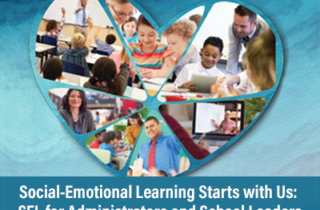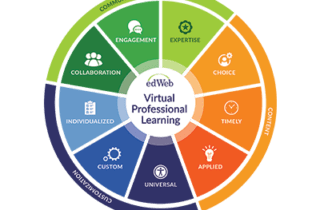Developing good educator-family relationships seems like a daunting task. After all, teachers can have anywhere from 25-75 students across their classes, and the ratio for guidance counselors and administrators could be as high as 500:1. But engaging families and creating true partnerships with them results in better outcomes for everyone.
Research has shown that social-emotional learning (SEL) increases academic achievement, improves behavior, and contributes to the overall sense of well-being for students and teachers. However, we can’t teach what we don’t know, and so for that reason, SEL starts with adults.
Research shows that strong relationships with families optimize student progress. Luckily, family involvement is an essential element of Multi-Tiered Systems of Support (MTSS) that helps parents and caregivers support their children’s academic journey.
During the edLeader Panel “Inclusive Technology: Breaking Barriers and Empowering Learners,” prominent education leaders emphasized the critical role of integrating inclusive technology systems within schools. The discussion centered around the unveiling of the Center on Inclusive Technology & Education Systems (CITES) framework, an initiative supported by the U.S. Department of Education’s Office of Special Education Programs.
Typical conversations about education reform revolve around things like how we teach (education policy) or what we teach (the curriculum). But according to Dr. Ron Ritchhart, world-renowned educator, researcher, and author, and Francis Vigeant, KnowAtom’s Founder and CEO, changing the “what” and “how” in education doesn’t have nearly as much impact as looking at the “why.”
Inclusion in schools and districts requires multiple stakeholders. An intentional, communal approach to involving them in inclusivity efforts (especially crucial for the LGBTQIA+ student and teacher community) is essential.
Across the country, there are 36,000 teacher vacancies. That may not seem like a lot, given the over four million teachers in the U.S., but suppose you multiply the vacancies by the number of students in each classroom (an average of 25) where a teacher is unavailable. In that case, you can fathom the significant effect on learning and instruction.
There is a big push to minimize screen time for kids because it is often equated to mindless, passive, and static engagement. However, flipping the script (or “flipping the screen”), screen time can be engaging, stimulating, and most importantly, educational.
The U.S. Department of Education recently published a report that suggests women occupy 19% of superintendent positions, but occupy 77% of teaching roles. Given the gap in representation at the highest level, the edLeader Panel “Empowering Women in Leadership: Breaking Barriers and Shaping the Future” brought together three superintendents—Dr. M. Ann Levett, Dr. April Grace, and Dr. Aurelia L. Henriquez—to discuss how to rise to the top as women in education.
edWeb.net is an award-winning professional learning network that helps engaged and innovative educators share their best ideas and practices — anytime, anywhere — with educators around the country and the world. edWeb makes it possible for educators to participate in online professional learning communities that are more open and inclusive, immediate and relevant, engaging and… read more →











